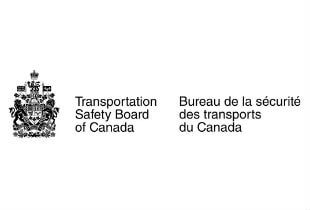In its investigation report (A15C0130) released on Jan. 17, 2017, the Transportation Safety Board of Canada (TSB) found that deteriorating weather and departure under conditions of near darkness led to the fatal September 2015 crash of a Robinson R44 helicopter near Foleyet, Ontario.
On Sept. 8, 2015, at approximately 20:15 (8:15 p.m.) Eastern Daylight Time, an Apex Helicopters Inc. Robinson R44 departed a camp on Horwood Lake, Ont., for the Foleyet Timber Camp with one pilot and one passenger on board. Sometime after liftoff, northwest of the Foleyet Timber Camp, the helicopter struck trees on elevated terrain and was destroyed by impact forces. There was no post-impact fire, and the occupants sustained fatal injuries.
The investigation determined that the flight was conducted in deteriorating weather and departed under conditions of near darkness. The helicopter was not equipped for flying at night or in instrument conditions, and the pilot was not certified for conducting such operations. It is likely that the pilot was unable to determine the helicopter’s height above the forest canopy and to notice the rising terrain ahead before striking trees.
Because a number of hazards are associated with night flights, the TSB issued Recommendation A16-08, calling for regulations to clearly define the visual references required to reduce the risks associated with flying at night.
The helicopter was equipped with an emergency locator transmitter (ELT) that activated upon impact; however, it did not transmit its position because the antenna had broken off during the accident. The aircraft was not reported missing until the following day at approximately 15:00 (3 p.m.), which resulted in search and rescue operations being delayed by approximately 20 hours.
In 2016, the TSB issued four safety recommendations (A16-02, A16-03, A16-04, and A16-05) related to ELT crash survivability. If existing ELT design and certification standards do not ensure that the currently-manufactured systems provide a reasonable degree of survivability from fire or impact forces, there is a risk that potentially life-saving search and rescue services may be delayed.
The investigation also found that the helicopter was not equipped with a flight data recorder or a cockpit voice recorder, nor was either required by regulation. In 2013, the TSB issued Recommendation A13-01, pushing for the installation of lightweight flight recording systems by all commercial operators. This occurrence demonstrates once more that if cockpit and flight data recordings are not available to an investigation, this may preclude the identification and communication of safety deficiencies to advance transportation safety.
Following the accident, Apex Helicopters Inc. has reviewed and emphasized the importance of timely reporting of overdue aircraft with all newly hired pilots and ground crew.
See the investigation page for more information.









